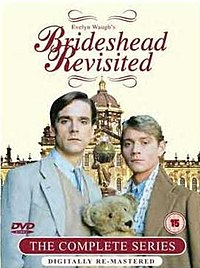 Today is the birthday of Mary Shelley, born August 30 1797, one of the icons of feminism and the Romantic age. There's a huge resource of material on Mary and her relationships with the other great names of the Romantic era, people who were friends, lovers, collaborators. You can find her works online here.
Today is the birthday of Mary Shelley, born August 30 1797, one of the icons of feminism and the Romantic age. There's a huge resource of material on Mary and her relationships with the other great names of the Romantic era, people who were friends, lovers, collaborators. You can find her works online here.The most recent book I read about Mary and her circle was Young Romantics by Daisy May, which concentrated on the relationships between the Shelleys, Byron, and figures such as the lesser known Leigh Hunt and the Cockney Poets, now coming back into scholars' radar.
Mary, who lived for almost three decades after Percy's death, has had the reputation until recently of the scholarly widow who abandoned her youthful radicalism and devoted her life to the works of her late husband, thereby doing a cleanup act on him:
The qualities that struck any one newly introduced to Shelley, were, first, a gentle and cordial goodness that animated his intercourse with warm affection, and helpful sympathy. The other, the eagerness and ardour with which he was attached to the cause of human happiness and improvement.
Certainly she loved him. After his death, she wrote to a friend:
Well here is my story - the last story I shall have to tell - all that might have been bright in my life is now despoiled - I shall live to improve myself, to take care of my child, & render myself worthy to join him. soon my weary pilgrimage will begin - I rest now - but soon I must leave Italy ...
Compare this to the rage of Claire Clairmont (Mary's step sister) in her unpublished memoir:
I saw the two first poets of England . . . become monsters of lying, meanness, cruelty and treachery — under the influence of free love Lord B became a human tyger slaking his thirst for inflicting pain upon defenceless women.
Even Leigh Hunt, a kindly family man, had a rather bizarrely close relationship with his sister in law that is an uneasy mirror image of the Shelley-Mary-Claire triangle.
The women and children certainly got the short end of the stick, if not the short end of the lifeline. You could die in childbirth, as Mary's mother did, of puerperal fever some ten days after the birth of her daughter. The lives of the Shelleys was darkened by the suicides of other women: Harriet, his first wife, abandoned by him; Fanny, Mary's older sister (the daughter of Wollstonecraft and her lover Gilbert Imlay); and by the deaths of their children. Only one of Mary and Percy's four children survived to adulthood. Claire had a daughter as a result of her liaison with Byron, who insisted on taking the baby and then putting her into a convent when she was little more than a toddler, where she died. As the New York Times reviewer of Young Romantics so succinctly states: In short, the two poets left the Italian peninsula, along with a few spots in England, strewn with dead relations.
As for fictional treatments of these turbulent characters, my favorite is Jude Morgan's Passion, a book that rings so true I tend to question nonfiction if it contradicts Morgan's account.
Mary was 25 when Shelley died (she was 19 when she wrote Frankenstein). After Shelley's death she appears to have had several relationships and received some proposals of marriage which she refused; I guess it's the writer in me that wants her to at least have had some more passion in her life (but being the sort of writer I am, not necessarily a happy ever after!). Yet I find myself uncomfortable that Claire, in her 70s, ranted still about Byron and Shelley's cruelty, or possibly for the first time; being the sort of writer I am, I'd liked her to have found forgiveness earlier.
Your opinions?

















